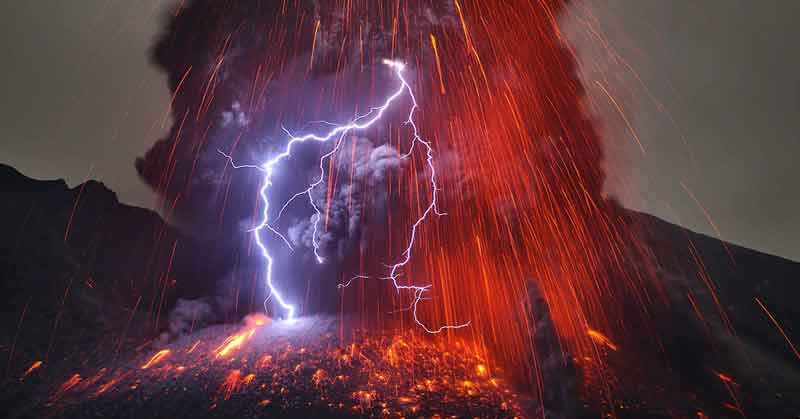Our planet is a strange and wondrous place full of amazingly beautiful scenery all across it. There’s still so much to be discovered in the world, however, so sometimes when we see these incredible natural phenomenon we find it hard to believe they’re real.
Natural Phenomenon That Look Like They Couldn’t Be Real
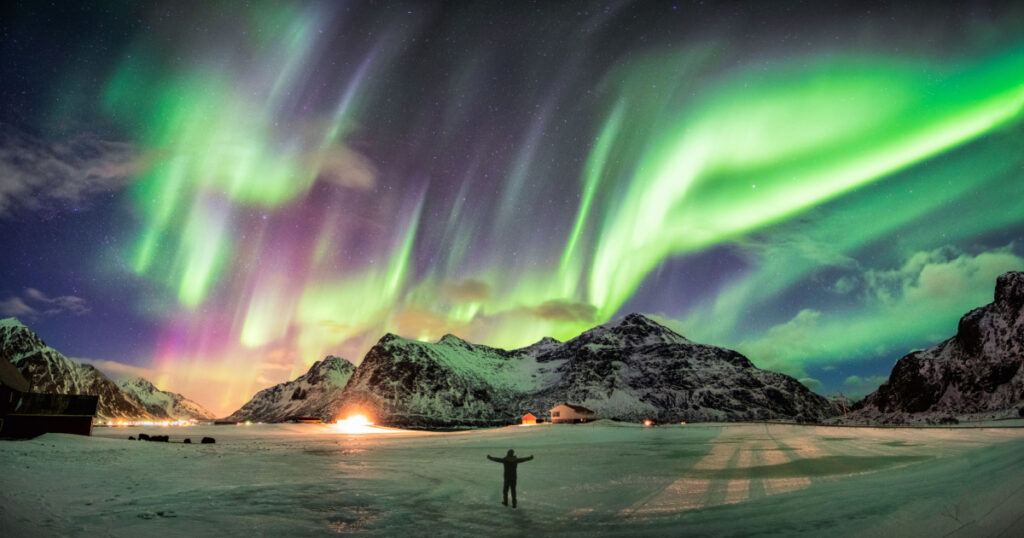
Especially since Photoshop has become so popular in doctoring photos. We can assure you that these natural wonders are entirely real even if your eyes refuse to believe it.
Volcanic lightning
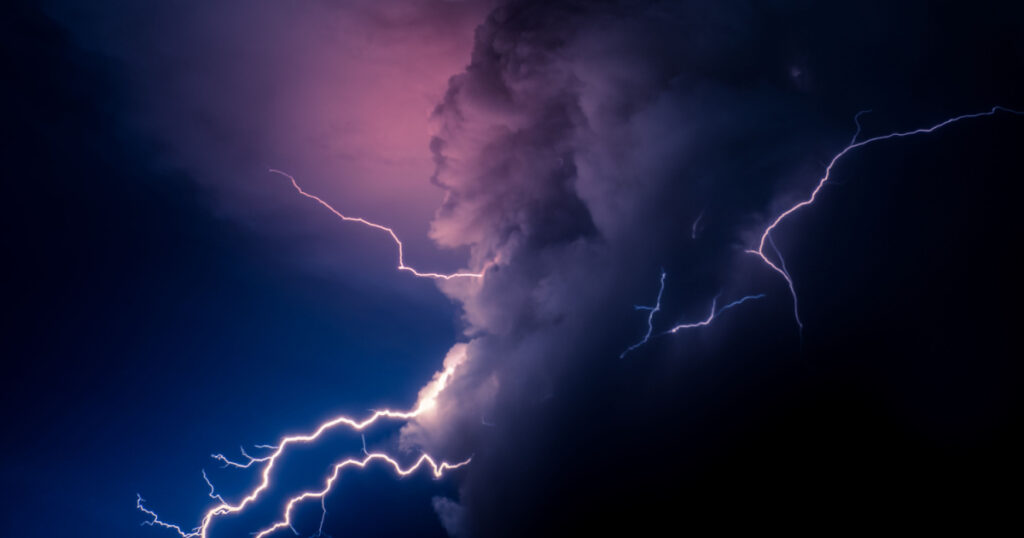
Your first thought may be Lord of the Rings, but Mt. Doom is surprisingly based on a real thing. When a volcano erupts, lightning can occur within the smoke plumes billowing out. This happens as a result of charge separation much like in a thunderstorm as the volcano carries a positive charge into the sky. Ash, rock, and ice particles all collide which creates balance in the atmosphere. I’m still convinced that it’s probably Sauron’s doing.
Read more: Flat-Earther Explains Why Nobody Has Fallen Off The Edge
Methane ice bubbles
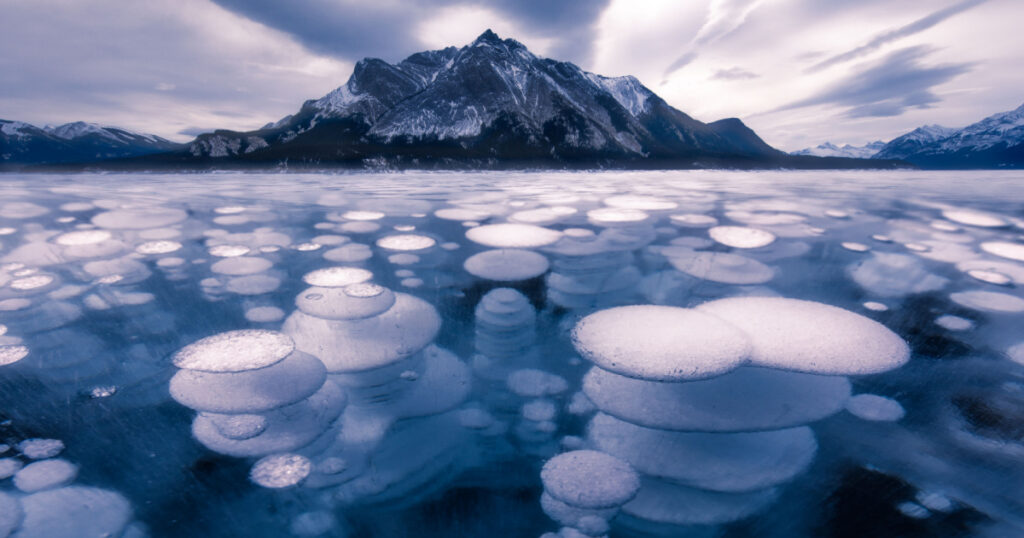
Imagine playing pond hockey on some ice like this. Lake Abraham in Alberta, Canada is home to a strange sight of frozen bubbles underneath the ice. Bacteria in the lake digest organic material which releases methane bubbles. When the methane makes contact with ice water it freezes in shape and rises to the top.
Giant’s Causeway
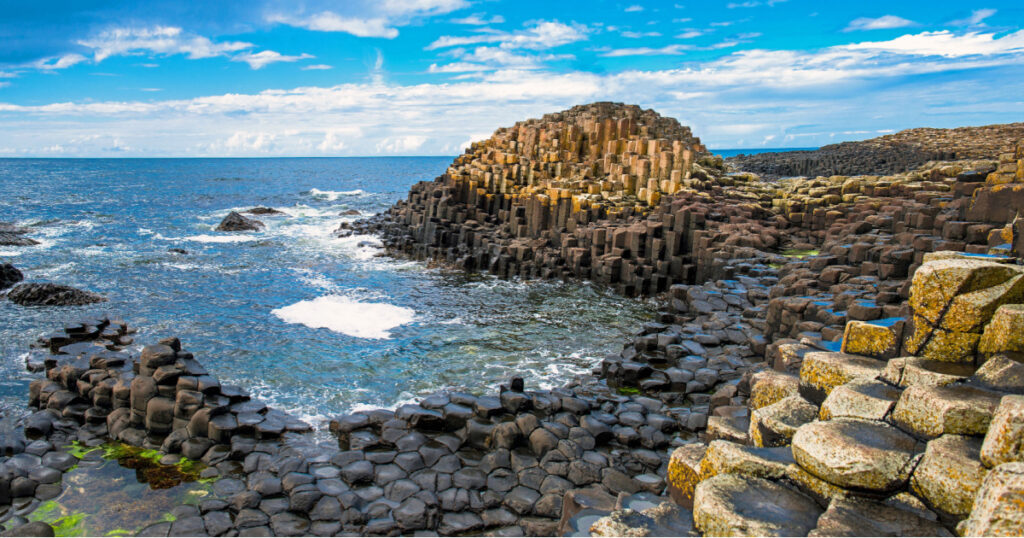
Legend says this natural phenomenon was created by a mythical Irish giant known as Finn MacCool when he was challenged to a fight by Scottish giant Benandonner. Located in Northern Ireland, approximately 40,000 interlocking basalt columns look carved from the rocky cliff side, with some of the columns as tall as 12 meters (39ft) with 5-8 sides. They are actually believed to be the result of an ancient volcanic eruption. It’s no wonder they’re one of Ireland’s top tourist attractions.
Undulatus Asperatus Clouds
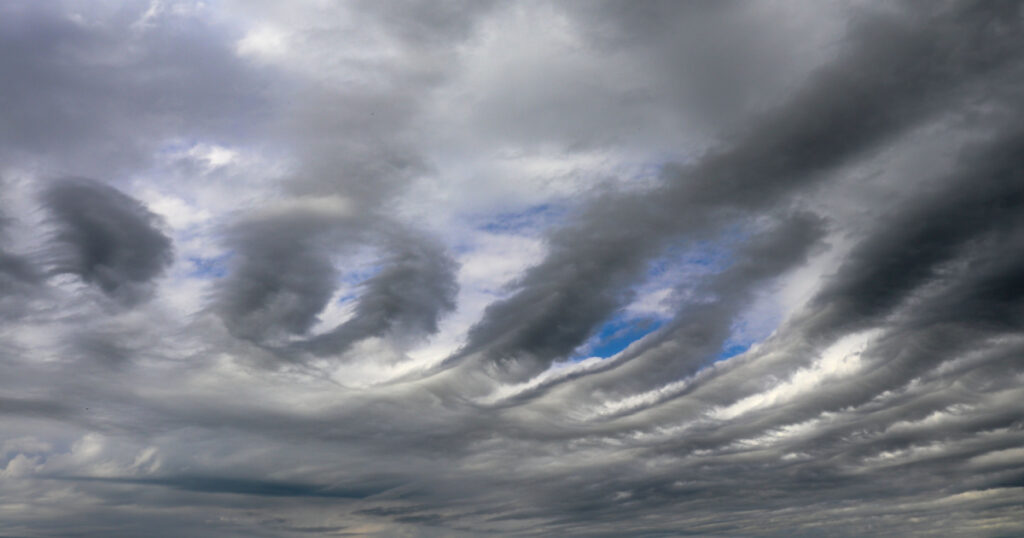
Sure, you’ve probably seen weird shapes in the clouds, but I bet you’ve never seen something resembling an ocean! These wavy, ocean-like clouds occur when rising air creates widespread cloud cover. Combined with wind shear and turbulence, it gives the clouds a rolling wave look. They might look ominous, but they actually don’t produce storms often. If you do a handstand you might be able to pretend you’re walking on water.
Read More: Ecosexuals Believe Having Sex with the Earth Could Save It
Lake Natron’s “stone” animals

Lake Natron in Tanzania might look like the work of Medusa, but it’s not actually stone. High alkalinity in the lake, about 10.5pH, from sodium carbonate and other minerals flowing in from the hills causes unaccustomed animals to become calcified. This gives off a stone look when really it’s more mummified, especially considering sodium carbonate was used for mummies in Egypt. The lake isn’t a complete deathtrap, however, as flamingos breed in the area.
Bioluminescent waves
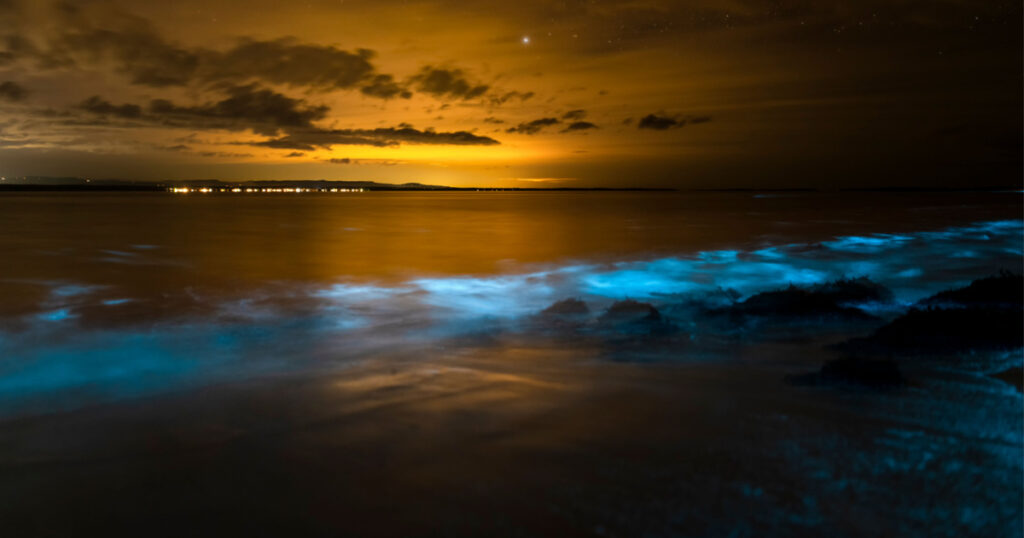
One of the wildest, most gorgeous natural phenomena in the world. No, it’s not something out of the latest sci-fi movie surprisingly. A beach in the Maldives experiences a pretty breathtaking phenomenon as microbes called phytoplankton and ostracod crustaceans create a bright blue glow in the water. It occurs when the organisms are stressed, either from being touched or crashing waves. Great for pictures, probably wouldn’t want to swallow it though.
Light pillars
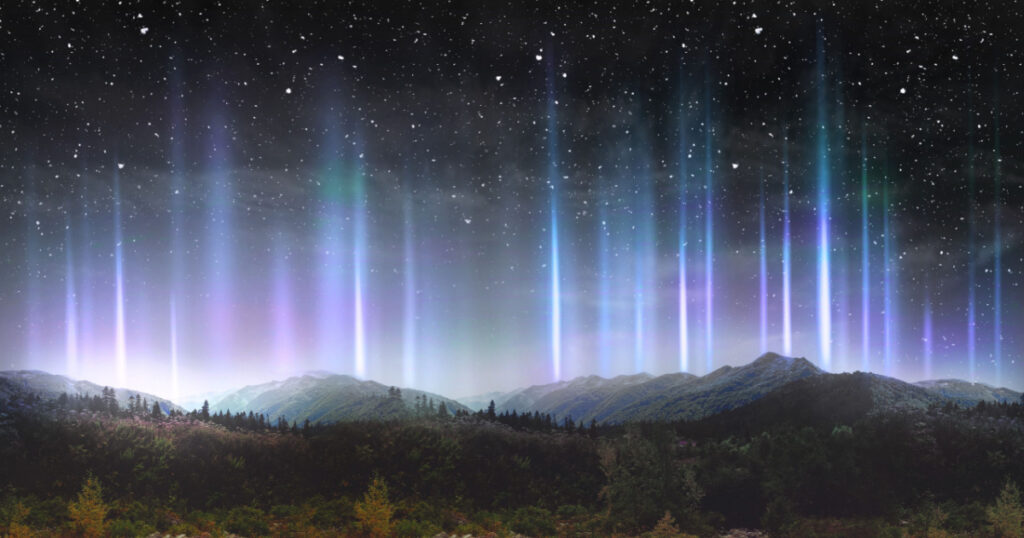
It might look like a divine spirit or alien abduction, but this natural event is just a trick of light. In winter or snowy climates, plate-shaped ice crystals form in clouds and can move close to the ground. Light from the sun or moon reflects off of these giving an illusion of floating light. They can also appear horizontally like a halo. So rubbing your eyes all you want won’t make it any less real.
Read: 21 Unbelievable Places That Look Like They’re From Another Planet
Rainbow eucalyptus
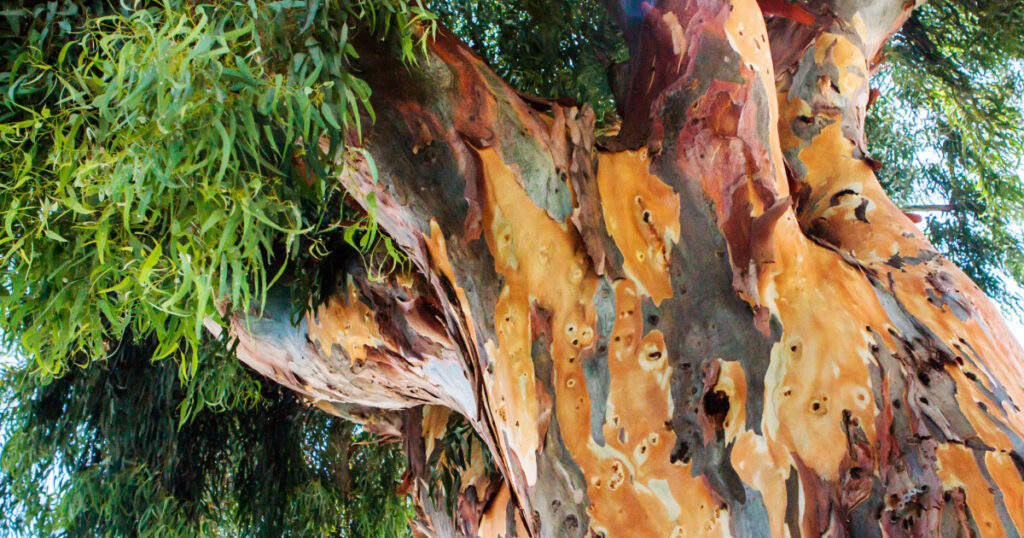
This tree-born natural phenomenon is stunning! Resembling the wall of a parent with a 2-year-old and a box full of crayons, this eucalyptus tree has bright-colored bark. The bark peels off at different times throughout the year revealing an inner bark that changes color as the tree matures. They’re found in rainforests, Hawaii, and other temperate climates.
Moeraki boulders
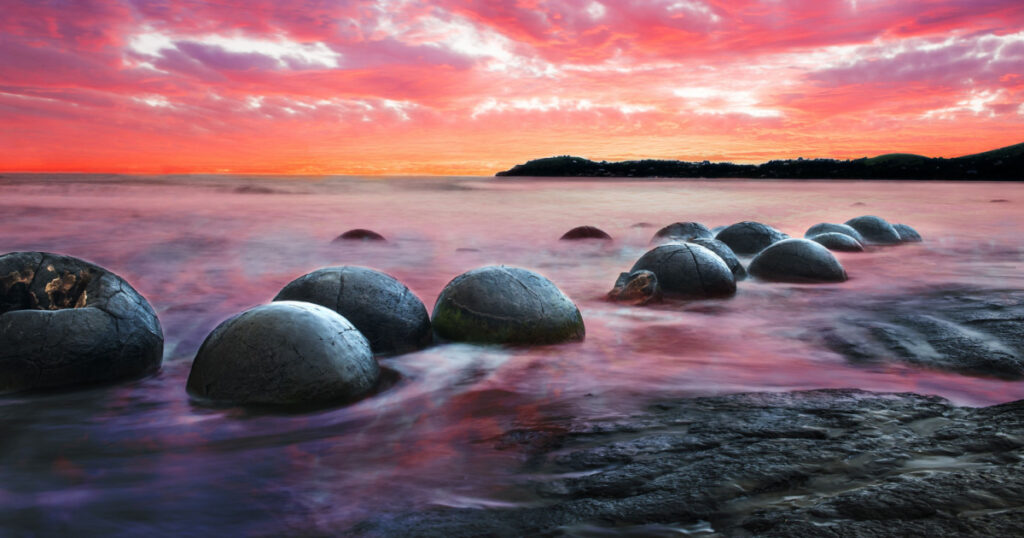
Not detailed like the Easter Island heads, a New Zealand beach is home to hundreds of massive, almost perfectly, spherical boulders. Formed from ancient sea sediments and centuries of erosion, these rocks range anywhere from 1m (3.3ft) in diameter to 2.2m (7.2ft)! As the shorelines eroded they became exposed and now litter the beach for all to see.
Living rocks
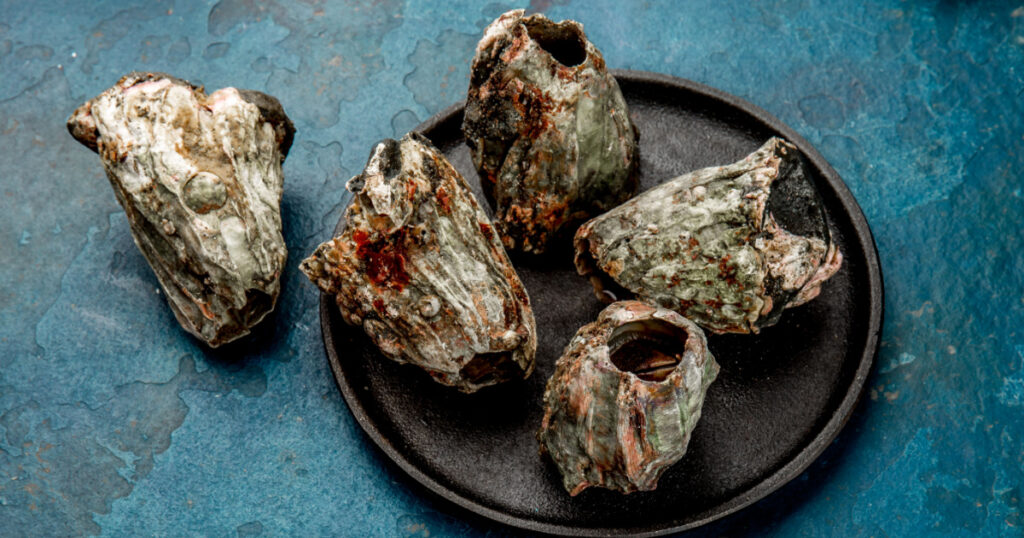
Okay, maybe not literally a rock, but these living organisms known as pyura chilensis sure fooled many people into thinking this natural phenomenon was just a bunch of stones. Located in Chile, the creature has a rough, rocky texture on the outside but can easily be opened with a hacksaw or knife to reveal what looks like blood and organs. They’re considered a local delicacy in Chile, although researchers find that might be bad due to a high concentration of vanadium. It always makes me wonder how the first person even thought they looked tasty enough to eat.
Spider web fields
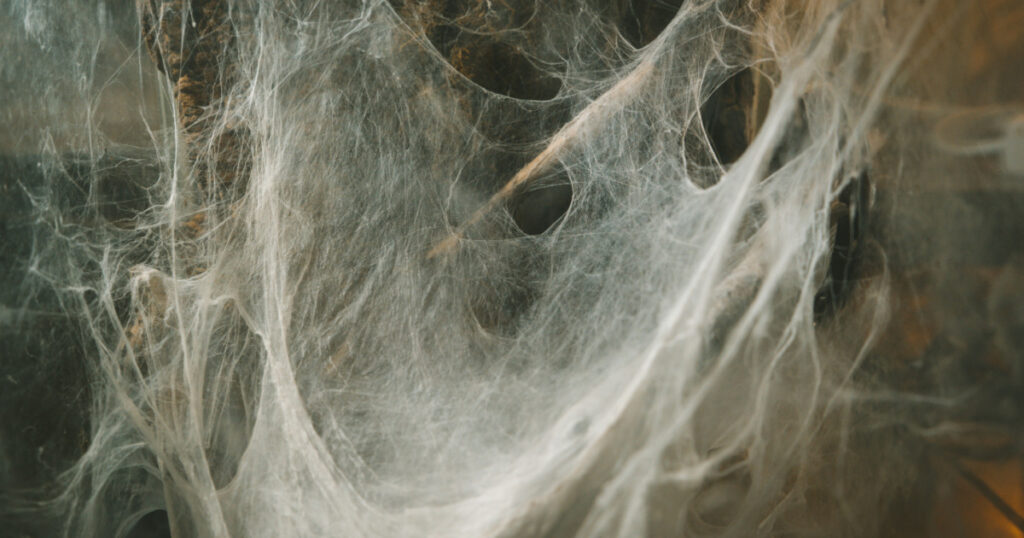
Arachnophobes beware! The city of Wagga Wagga, Australia became the victim of spiderwebs across fields and bushes as far as the eye could see. Intense flooding in the area caused ground-dwelling spiders to flee their homes and build webs along the countryside. It might look nice and cloud-like from a distance, but up close is not for the faint of heart.
Keep Reading: When Researchers Discovered an Underwater Volcanic Range it was Teeming With New Scary-looking Fish Species
